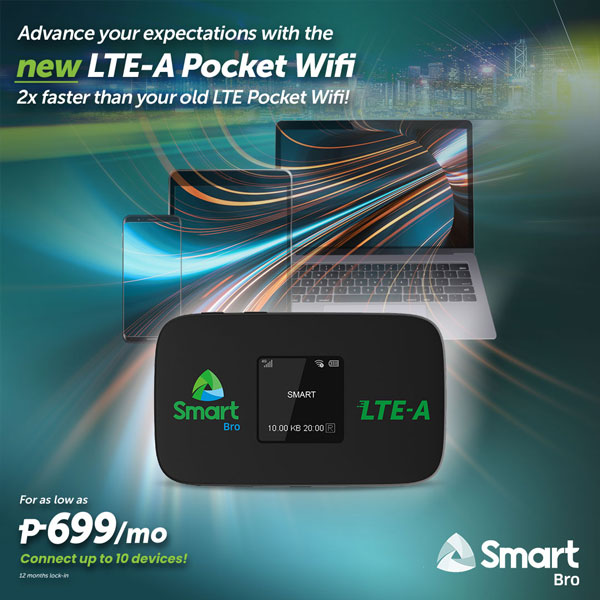ASUS ROG Zephyrus G14 Review - Android
The ASUS ROG Zephyrus series has always been the brand’s premium line, merging power and portability in an elegant body. This year’s iteration comes...
The post ASUS ROG Zephyrus G14 Review appeared first on YugaTech | Philippines Tech News & Reviews.
The ASUS ROG Zephyrus series has always been the brand’s premium line, merging power and portability in an elegant body. This year’s iteration comes with AMD’s most powerful Ryzen 9 4900HS processor and NVIDIA’s RTX 2060 GPU. It also features the company’s new ANiME Matrix design, and an updated cooling system. Is this your next portable gaming solution? Find out here!

Design and Construction
True to the Zephyrus line, the G14 has a sleek body with a matte finish. We got the unit in the Moonlight White colorway, and believe me when I say it looks clean. The downside of getting a white laptop, though, is that it does get dirty quickly. Thankfully the coating doesn’t stain well, and you should be able to keep it clean as long as you have a towel ready. The body is also solidly built, with no flex when pressed down, squeezed, or bent.

Sitting on the lid is ASUS’ ANiME Matrix design, which is made up of 1,215 individual mini-LEDs. You can use this to display animations, system settings, or even act as an audio visualizer when playing music. While it isn’t too noticeable when under direct sunlight (as seen in the photo), So far, the LEDs are only white, but in true ROG fashion, I think it’s safe to expect RGB iterations in the future.

The front of the laptop is bare, which adds to its clean aesthetic. However, the lack of a ledge does make one-handed operation difficult.

Over at the left, you have an exhaust grille, power plug, full-sized HDMI 2.0b port, USB Type-C with DisplayPort 1.4 and Power Delivery support, and the 3.5mm audio jack.

On the other side, you get another USB Type-C, two USB Type-A ports, an exhaust grille, and a Kensington lock wedge.
I hope ASUS had put the USB ports on the left instead, as the plugs have interfered with my mouse movement while playing first-person shooters. My palms also became sweaty over time, as the exhaust grille was blowing hot air directly to my hand. Using an external keyboard and moving the laptop farther (like you would a monitor) is definitely the way to go when playing games.

There are also exhaust grilles toward the back of the device.

Flipping the laptop over, we see four rubber feet that keep the laptop in place on glass, plastic, and wood surfaces. It’s there are a lot of intake grilles underneath to help keep the 8-core processor at bay, and there are two bottom-firing speakers toward the front of the device.

ROG has also strayed away from their previous cooling solution in place of something similar to the Ergolift found in their ultrabook lines. Not only does this keep the insides clean (especially for those with pets), it also gives the G14 enough clearance to intake air from underneath. It doesn’t suffer from coil whine like the previous Zephyrus laptop I had my hands on and was relatively quiet even under heavy load.

The input devices on the G14 is one of the best I’ve used so far. While the keyboard is the typical chicklet style keyboard, the keys require an adequate amount of actuation force, with no pretravel and long enough post-travel. The keys are sized and spaced well, allowing for a comfortable typing experience. Unfortunately, the fonts are your typical gamer font, which I’m not a fan of. As expected, it supports anti-ghosting and N Key Rollover.

It also comes with a glass trackpad compatible with Window’s precision trackpad. It’s one of the most responsive and accurate touchpads I’ve used. The buttons underneath are tactile as well. My only gripe is that the tap functionality isn’t as responsive as I’d like when using multiple fingers.
Display and Multimedia
The Zephyrus G14 is equipped with a 14-inch IPS-level display that’s Pantone validated. Gaming, watching movies, and other multimedia content was a delight. While we did see some slight ghosting, it wasn’t too noticeable in-game.

The audio quality produced by the quad speakers were also great, with punchy lows, and moderately detailed highs. Where it lacks is in loudness. While it’s fine when you’re in a closed room, it doesn’t get loud enough in large open areas.

The Zephyrus G14 does not come with a built-in webcam, but each purchase does come with an external GC21 webcam. It performs much better than your typical built-in webcam, capable of shooting Full HD videos at 15FPS and 2MP photos. It does, however, use up a USB-A port.

Thankfully, the GC21 does come with microphones as well, as mounting the device on top of the laptop will cover the built-in array microphones. Both microphones perform similarly. It doesn’t reduce ambient noise as much and is sensitive enough to pick up the keyboard when typing aggressively. Voice was clear and had no problems talking over discord.
OS and Apps
The Zephyrus G14 comes with Windows 10 Home preinstalled. After formatting, Windows only reads 934GB out of the 1TB NVMe SSD. Here is the Crystal Disk Mark 6 result for the drive:
| Read (MB/s) | Write (MB/s) | |
|---|---|---|
| Seq Q32T1 | 1946.6 | 1773.4 |
| 4KiB Q8T8 | 627.9 | 950.4 |
| 4KiB Q32T1 | 403 | 338.3 |
| 4KiB Q1T1 | 49.71 | 106.7 |
The benchmark results show that the drive is in the upper tier of laptops we’ve tested, outperforming the Dell G7 in all testing. However, booting to Windows was slower compared to others, taking up to 9.1 seconds based on the Task Manager.

Along with the Typical Windows 10 apps, the ROG Zephyrus G14 also came with Microsoft Office, Radeon Settings Lite, Dolby Access, ROG Armory Crate, ROG Game Visual, and McAffee preinstalled.

Different performance modes, play around with the ANiME Matrix lighting, and configure other settings can be found in the Armory Crate. Meanwhile, you can toggle different screen optimization such as Racing, FPS, Cinema, and Eyecare modes in the ROG Game Visual.
Performance and Thermals
The Zephyrus G14 we have is the top of the line model, featuring an AMD Ryzen 9 4900HS processor with an NVIDIA GeForce RTX 2060 GPU. It’s also equipped with 16GB of DDR4 RAM and a 1TB PCIe SSD.
We tested several synthetic and real-world benchmarks, including competitive titles, to see how well the G14 performs. All tests were done in an unairconditioned room with an ambient temperature of 33°C, plugged in the socket, with the feet raised an inch to allow better airflow. The laptop was tested in its vanilla, out of the box state, with no OS optimizations done, and no battery settings changed. Game benchmarks were run three times in succession, and the average was taken to take into account variance and throttling. Synthetic benchmarks, on the other hand, were run in 10-minute intervals to allow the laptop to cool.
First, we have the CPU benchmark Cinebench:
Cinebench R15

Cinebench R20

Based on the Cinebench scores, the Ryzen 9 4900HS is able to match the desktop 8-core Ryzen 7 3700X in the single-core test but falls by around 20% when compared to the multi-core tests. With AMD’s 4000-series CPUs, laptops have finally caught up with their desktop counterparts, able to provide strong performance.

Heading over to the Unigine Superposition results, the NVIDIA GeForce RTX 2060 used in the Zephyrus G14 does appear to be cut down, scoring only 3,300 points, which is 50% less than its desktop counterpart.
Testing both the CPU and GPU, we ran 3D Mark’s DX11 test: FireStrike. While we would’ve wanted to test the DX12 test TimeSpy as well, we couldn’t get it installed on the system for some reason.

Moving over to game tests, we tested mostly first-person shooters to take advantage of the high-refresh-rate display, and 2018’s Shadow of the Tomb Raider for its RTX capabilities.
Starting with the recently released Call of Duty: Warzone, the G14 was not able to perform well in the title, averaging only 69FPS with the graphics turned to High.

It did, however, fare better in Riot’s recently released Valorant. Testing a full round of the “Spike Rush” game mode with competitive graphical settings, the G14 was able to achieve an average of 137 FPS, with a 1% low of 114 FPS. Do take note, though, that the GPU was not limited in this title. Despite the Ryzen 9’s high single-core score, it was still not enough to run the game with higher frames.

Moving over to CS:GO, we tested the game in Ulletical’s community benchmark, running at both 16:9 at 1080P and 4:3 at 1024P with competitive graphical settings.

Lastly, we tested the RTX 2060’s ray tracing performance with Shadow of the Tomb Raider. We tested the game in three graphical settings, letting the laptop cool in between. With the game set to Ultra, ray tracing turned off; it managed to average 69 FPS with the in-game benchmark. Turning ray tracing to medium saw a 12FPS decline. In an effort to balance the performance hit of ray tracing, we turned the visual preset down to High while turning RTX up to high. Based on our testing, you’d need to fine-tune your settings to take advantage of real-time ray tracing.

Next, we tested the laptop’s thermal capabilities using Aida 64. Running the system stability test for 25 minutes, we recorded a maximum temp of 93C, averaging 90C. It also managed to keep all eight cores running at 3.1GHz while under full load.
05/06/2020 03:31 AM
Nokia C2 coming to Shopee 6.6 Super Flash Sale
05/06/2020 07:12 AM
You can now video chat with up to 20 people on Viber
05/06/2020 06:54 AM
What are malicious miners and why SMBs in SEA should care
05/06/2020 03:02 AM
Smart launches LTE-A Pocket Wi-Fi Plans
05/06/2020 02:38 PM
WATCH - Redmi Note 9 Unboxing and Hands-On
05/06/2020 03:36 PM
Up to 50 percent Off on COOCAA TV at Lazada 6.6 Bounce Back Sale!
05/06/2020 02:41 AM
ASUS laptops get discounted price on Shopee 6.6 Super Sale
05/06/2020 12:07 PM
POCO F2 Pro set to launch in the Philippines
05/06/2020 10:37 AM
- HEALTH
- Comics
- Libraries & Demo
- Sports Games
- Racing
- Photography
- Transportation
- Media & Video
- Sports
- Health & Fitness
- Weather
- Medical
- Cards & Casino
- Arcade & Action
- Personalization
- Social
- Communication
- Productivity
- Casual
- Shopping
- Tools
- Brain & Puzzle
- Business
- News & Magazines
- Finance
- Lifestyle
- Music & Audio
- Entertainment
- Travel & Local
- Books & Reference
- Education
2014 © Filipino apps and news






